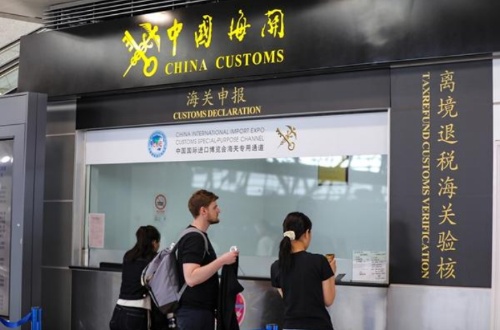Thu May 15
Global Times: How will American special operations team intervene in S.China Sea? Insights from Chinese and Philippine sources and analysts
 2024-11-27
2024-11-27
 Global Times
Global Times
The US military has recently announced its support for Philippine operations in the South China Sea through task force Ayungin, named after the Philippine term for China's Ren'ai Jiao (also known as Ren'ai Reef). This initiative, according to Manila, will involve collaboration in intelligence, surveillance, and reconnaissance efforts. What additional, lesser-known details exist about this task force? Why was its launch timed during such a sensitive period? To what extent can it bolster the Philippines' provocations in the South China Sea? The Global Times conducted interviews with a Chinese expert who has engaged with high-level sources in the Philippines, as well as a former deputy national security advisor of the Philippines, to uncover deeper insights on the task force.
The announcement represents the latest example of the US "fanning the flames" in the South China Sea. It also underscores the current Philippine government's dedication to strengthening its strategic partnership with the US, according to Ding Duo, a deputy director at the Institute of Maritime Law and Policy at the China Institute for South China Sea Studies, who recently concluded a visit to the Philippines, where he engaged with local sources familiar with the matter.
"The US task force will only hinder the peaceful resolution of disputes that require direct dialogue, consultations, and negotiations between the Philippines and China," stated Rommel C. Banlaoi, Chairman of the Philippine Institute for Peace, Violence, and Terrorism Research, in an interview with the Global Times on Monday.
As the former director of the Center for Intelligence and National Security Studies in the Philippines, Banlaoi previously told the Global Times that he is dismayed by the current government's decision to increase American military presence, which he believes undermines the balance in the Philippines' relationship with China and promotes a markedly pro-Americanism in foreign policy.
What is the US task force?
According to Ding, local sources revealed the concept of the US task force began to take shape in July 2024.
The idea for forming the US task force emerged after the direct serious clash between China and the Philippines in the South China Sea on June 17 when a Philippine supply boat ignored warnings from the Chinese side and charged into waters off China's Ren'ai Jiao.
The US brought out the idea of founding a task force to the Philippines following the incident, which was then accepted by the Philippine side.
Ding deems that the formation of the US task force likely stemmed from concerns over the July 21 agreement between China and the Philippines regarding maritime disputes following the clash. The temporary agreement established arrangements for humanitarian supplies of essential goods for the Philippine warship stranded at the Ren'ai Jiao. Both parties agree to jointly manage maritime disputes and promote the easing of tensions in the South China Sea.
The US task force was established around the same time as the temporary agreement, suggesting that the US is concerned the agreement may hinder its strategic goals in the South China Sea, according to the expert.
The task force comprises approximately 15 US military personnel stationed on Palawan Island in the Philippines, who regularly engage in training exercises with the Western Command (WesCom) under the Armed Forces of the Philippines (AFP). These exercises primarily focus on providing personnel rotation and logistical support to the Philippine military vessel that is illegally stranded at China's Renai Jiao, Ding revealed to the Global Times.
Banlaoi said that the US established the US task force to support Philippine forces not only in rotation and reprovisioning missions, but also in protecting Philippine presence in Ayungin Shoal (Ren'ai Jiao). "The US provides operational training, intelligence information sharing and threat assessment of situation around the shoal, almost the same kind of support that the US has provided the Philippines during the siege of Marawi in 2017 and the Global War on Terrorism from 2001-2010 through the Joint Special Operations Task Force - Philippines."
Ding further noted that the unmanned equipment currently provided by the US task force to the Philippines includes at least four unmanned surface vessels MANTAS T-12 and at least one T-38 Devil Ray, both of which are from Australian company Maritime Tactical Systems (MARTAC) USA Division.
According to a piece on an online news platform Straight Arrow News, Devil Rays can be used as a mother ship of sorts to help relay signals to the T-12s. They can also be used as a weapons platform.
How much can it support Manila?
The maritime situational awareness capabilities of the Philippines remain relatively underdeveloped, a longstanding concern held by the Philippine military. An article from the US think tank Asia Maritime Transparency Initiative in December 2023 pointed out that "the Philippines faces substantial maritime governance capacity gaps, with shortfalls in maritime domain awareness standing out as a primary concern."
The US has provided substantial support to the Philippines in areas such as information sharing, situational awareness, and engagement tactics to bolster its capabilities.
Since 2021, the Philippines has been utilizing the SeaVision program, a maritime situational awareness tool, led by the US Department of Transportation, at no cost. Currently, this system is being employed by the Philippine Coast Guard, the Philippine Navy, the Bureau of Fisheries and Aquatic Resources, and the National Coast Watch Center, as observed by Beijing-based think tank South China Sea Strategic Situation Probing Initiative (SCSPI).
In May, the US and the Philippines issued a joint statement on space dialogue, announcing an enhancement of cooperation in leveraging space for both maritime and space situational awareness. Moreover, within the framework of the US-Japan-India-Australia "Indo-Pacific Maritime Domain Awareness Partnership," the US is coordinating resource support from Japan, India, and Australia for the Philippines, according to SCSPI.
Many Filipino scholars contend that the security cooperation between the Philippines and the US is designed to strengthen the asymmetric advantage over China, enabling the execution of surveillance missions focused on China's maritime activities, Ding noted.
The Ayunjin task force has been interpreted by Philippine media as a direct indication of US military assistance to the Philippines.
Banlaoi believes that the US task will benefit the Philippine military for operational support, intelligence gathering and tactical capacity building, but it politically hinders peaceful dispute resolution between the Philippines and China.
By establishing the task force, the US has sought to gain direct insights into the operational patterns of China Coast Guard vessels, thereby enhancing its situational awareness and battlefield readiness. This move can be interpreted as a concealed intention of the US, Ding noted.
"It remains unclear whether the US task force will expand in personnel and scope. The US may also use this opportunity to encourage the Philippines to provoke incidents at sea, such as conducting 'freedom of navigation operations' against China or providing 'escort' services for Philippine supply ships in contested areas. US military personnel might observe aboard these vessels under the guise of journalists or offer guidance for Philippine maritime operations," he told the Global Times.
If the Philippines continues to provoke incidents through its strengthened alliance and external support, engaging in "gray zone" tactics and challenging China's South China Sea policies with misleading narratives, it risks undermining constructive resolutions and managing differences, Ding stressed.
Disclaimer: This article is reproduced from other media. The purpose of reprinting is to convey more information. It does not mean that this website agrees with its views and is responsible for its authenticity, and does not bear any legal responsibility. All resources on this site are collected on the Internet. The purpose of sharing is for everyone's learning and reference only. If there is copyright or intellectual property infringement, please leave us a message.




